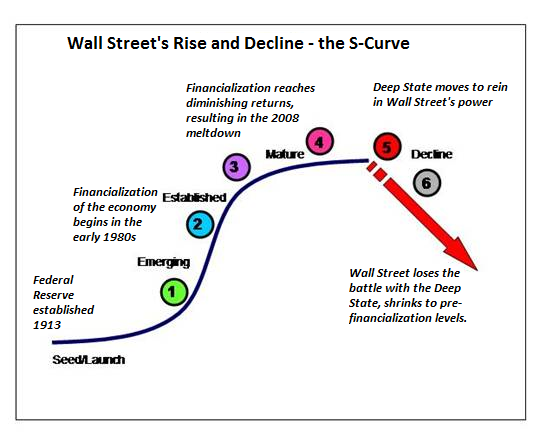Seven charts that leave you no choice but to (not) feel optimistic about the US economy
Although the facts that they presented are correct, the conclusion that they drew is not.
In the following sections, we will examine and refute each of the seven pieces of evidence that were presented by QZ.
Jobs
Growth in nonfarm private payroll employment (NFP) has been steady since 2012.
That said, it’s taking more money printing – aka Quantitative Easing (QE) – to achieve the same number of job gains month over month.
The following chart shows that if you deflate the gains in NFP by the increase in the Fed’s assets then you’ll see a diminishing return on QE.
Despite the fact that the labor markets have been improving for years, the Fed’s actions are having less and less of an effect.
Unemployment
The unemployment rate has been in decline since it peaked it late 2009.
But that’s not the whole story.
In contrast, the employment to population ratio has barely moved since 2010.
The next figure shows that, since the financial crisis, the falling unemployment rate has not been matched by a rising employment to population ratio.
This means is that unemployment rate is falling for the wrong reasons; i.e. because people are leaving the labor force.
Job Openings
Job openings have been on the rise since the middle of 2009 and are now as high as they were in 2007.
Be that as it may, job hires have been lagging openings since the summer of 2010.
As you’ll see in the following graph, hires are still well off their peak in 2006.
The labor market is better than it was but it’s still far from strong.
Housing
The housing market has improved significantly since the last depression but it’s still extremely weak by historical standards.
Often times, the financial media will present housing statistics that begin right after the last crisis.
That’s a great way to show the improvement that’s occurred this cycle; however, it doesn’t give you the proper context.
The subsequent diagram shows that new one family houses sold are still at a level that’s been associated with recessions in the past.
If this recovery was as strong as some people say it is then new home sales would be much higher than they are.
Autos
As a result of cheap financing, car sales are now at post-crisis highs.
But is the auto market as strong as it seems? Maybe not.
The ensuing chart shows that domestic auto inventories are now at their highest levels since early-mid 2001.
This means that, although sales have been rising, so has the number of autos available for sale.
If demand starts to fall off then there will be a lot of outstanding supply.
That scenario would not be good for the auto market.
Consumer Sentiment
Sentiment has been increasingly positive since 2009.
That said, it’s still lower than it was in 1995.
The succeeding figure shows that consumer sentiment has been making lower highs – i.e. lower peaks – since 2000.
This could be indicative of a loss of confidence in the financial industry.
In other words, after each bubble – first the Nasdaq, then the housing, and now the Fed bubble? – the consumer loses confidence in the system.
Intuitively this makes sense because of how many people were negatively affected by market crashes.
Stocks
The S&P 500 has been on fire since it bottomed in early-mid 2009.
S?t?e?v?e? ?L?i?e?s?m?a?n? Some will argue that its performance is a reflection of an improving economy.
Others say that it’s been driven by the Fed’s monetary policy.
Take a look at the following graph – the S&P 500 divided by the Fed’s balance sheet – and then decide for yourself. ;)
This chart is just hilarious.
It goes to show that the Fed is to the S&P what steroids were to Barry Bonds.
Do I have to?
After reading through this piece, it should be quite clear that you don’t have to be optimistic about the US economy.
Yes, there are some bright spots; but everything’s relative.
The current expansion has been ongoing for quite some time.
Therefore, it’s unlikely that “this is just the beginning” of secular bull market.























